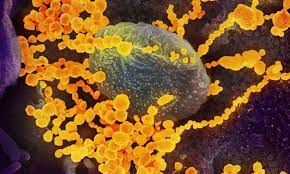After black and white, yellow fungus infection detected

image source: sentinelassam.com
The outbreak of the second wave of the coronavirus pandemic in India brought along unending woes, with new cases spiralling and deaths mounting to unprecedented numbers. Amid the rising cases of black fungus infection across India, the first case of yellow fungus, which is considered dangerous than black fungus and white fungus, has been reported from Ghaziabad in Uttar Pradesh.
At a time when the country was still trying to tackle the startling rise in Mucormycosis cases, White and Yellow fungus infections also started being reported from various parts of India.
Yellow Fungus infections, which are not a new disease, have been detected in Ghaziabad so far. Some doctors have warned that Yellow Fungus can pose more risks than Black or White Fungus infections because this one affects the internal organs.
Like most fungal infections, this is also primarily caused by unsanitary conditions, such as poor hygiene, contaminated food/ oxygen source. Overuse of steroids and antibacterial medications can also cause the disease. Patients who have comorbidities or are on immuno-suppressants may be at a greater risk of contracting the infection.
Symptoms of yellow fungus are lethargy, low appetite, or no appetite at all and weight loss.
In serious cases, yellow fungus can also cause leakage of pus and slow healing of the open wound and slow healing of all wounds, malnutrition and organ failure and sunken eyes due to eventual necrosis.
Black fungus is not contagious and can’t spread from one person to another. AIIMS Director Dr. Randeep Guleria earlier said that it is not contagious, adding that low immunity leads to black fungus. “About 90-95 percent of cases have diabetes and have been given steroids,” Guleria added.
Fungal infections usually spread when an individual inhales moulds found in the environment. While yellow fungus infections could also spread via high levels of humidity or presence of stale and contaminated food, poor hygiene and unclean conditions remain the main reasons for the infection.
